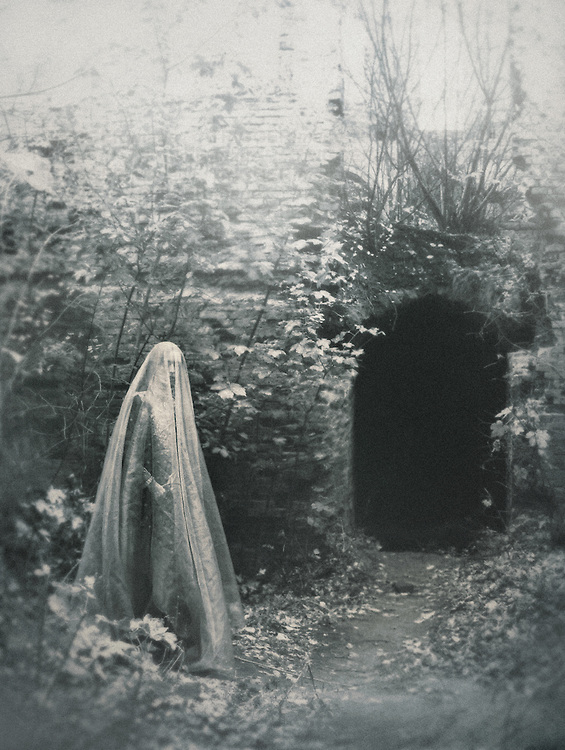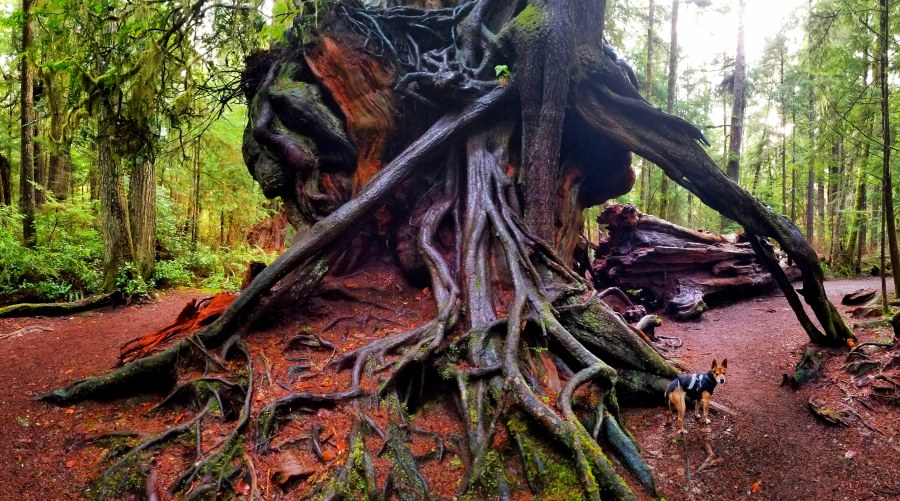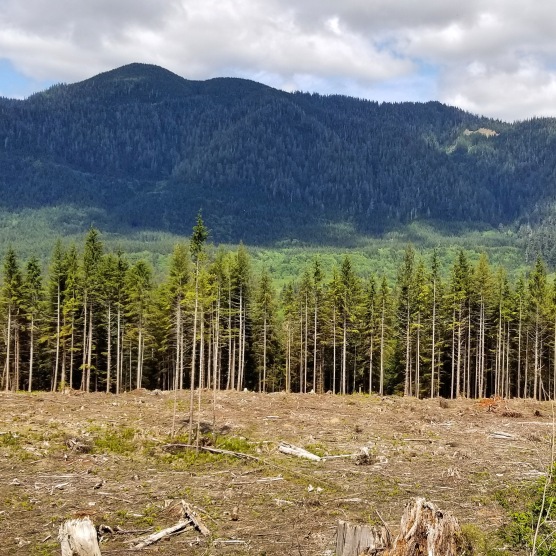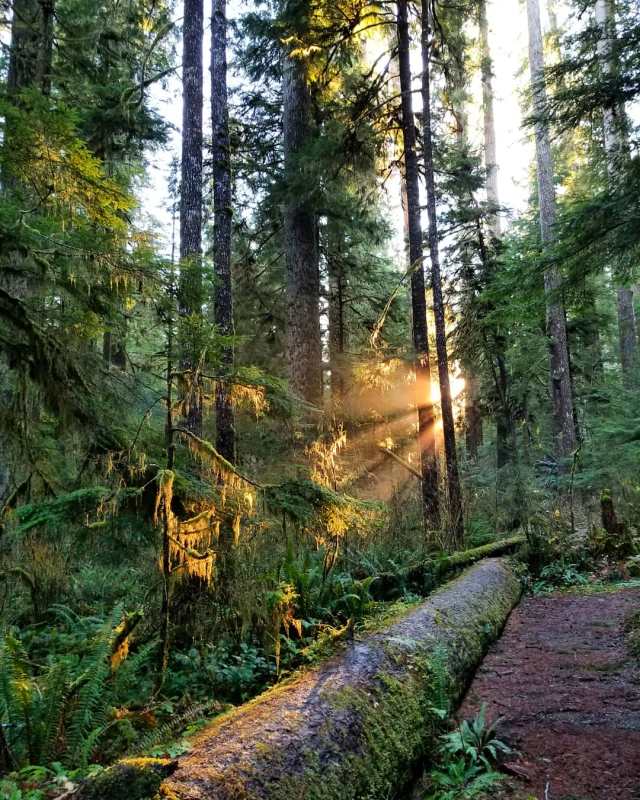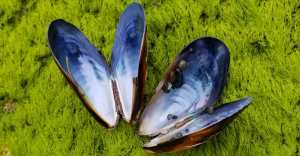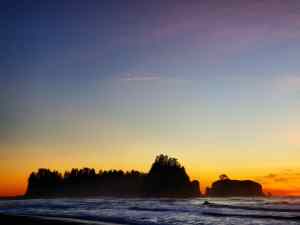This is my first article for the Deepening Resilience project, a 12-week community blog project (coordinated by me). In each post, I hope to include scientific/academic information, discussion, and practices you can engage with. Check out the website for posts from other writers, and please consider joining the conversation yourself.
Defining Resilience
Resilience has become a bit of a buzzword, and as such the meaning has become muddied. The concept has roots in multiple disciplines. Ecological resilience is defined as “the capacity of a system to absorb disturbance and reorganize while undergoing change so as to still retain essentially the same function, structure, identity, and feedbacks.” (Wikipedia) It can also be defined as the property that mediates transition among the existence of multiple states of stability. (Abstract) Social resilience is the individual/community ability to adapt when experiencing adversity or trauma. Psychological resilience is considered to be an inherent individual trait that can be developed. These slightly different meanings are integrated in the social-ecological system, which emphasizes “the integrated concept of humans in nature … the delineation between social systems and ecological systems is artificial and arbitrary. … [T]he SES approach holds that social and ecological systems are linked through feedback mechanisms, and that both display resilience and complexity.” (Wikipedia) The application of these concepts in the context of global climate change has given rise to the field of climate resilience.
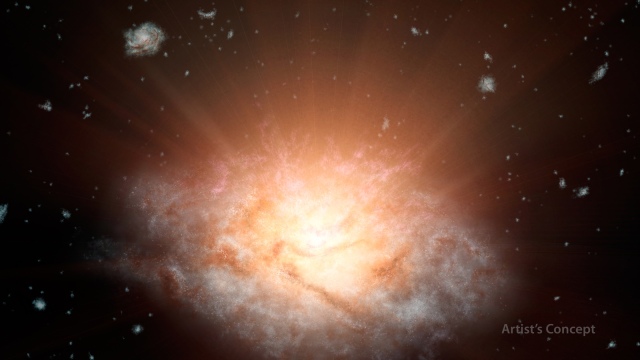
Deepening Resilience
Resilience has been an issue of importance in my life for quite some time; I’ve experienced my share of trauma and I’ve been asked how I manage to ‘keep going’ in the face of such pain and adversity. The truth is, I haven’t always been able to keep going… and sometimes continuing in the same way is the wrong thing to do. Resilience is not maintaining the status quo, acting as if nothing is happening – it is adapting to situations so that the larger system can go on, and sometimes that means finding another version of stability.
As humans are a part of complex ecological systems, our resilience is intimately tied with ecological resilience. We can see this writ large as we reach peak oil and the climate changes. Human actions have threatened life on the planet, and now our lives are threatened by environmental disasters, changes to food and water supplies, and of course, each other. One of the greatest challenges we face in climate change may not be the ecological changes themselves; it may be the reactions of people in power, the violence that is sure to escalate as resources dwindle, the disaster capitalists and war-mongers that swoop in to take advantage of the chaos. We must always remember that those who suffer the most are people who contributed the least to climate change, who are already marginalized, who have had their resources stolen. These are the people – and it includes many of you reading this – who I worry about, and who I hope can develop resilience in themselves and in their communities.
To be clear, I do not ascribe to the anti-civilization or the ‘humans are a virus’ mindsets, neither do I see humans as the most important members of ecological systems. I also don’t view climate change as an ideal opportunity to enact some futuristic utopia. But I do believe that humans remembering our place within the great web of life is the kind of humbling and empowering medicine that we need in the age of the Anthropocene. The world is suffering, and it will take our hearts, our minds, and our service to ease that suffering.
This is where my work towards resilience rests. I envision resilience in the place where the spiritual-social-ecological meets. It is where I try to navigate how to reconnect with place in a world that is suffering, how to resource myself amidst that pain, and how to prepare myself and others for what is to come, all while acknowledging and working through the many intersections of privilege and oppression that weave through my life. This is not a part of the seven principles for building social-ecological resilience; it is not necessarily the purview of scientific thought, but it is no less important.
This is one reason why the Deepening Resilience project is so important; there is so much need for earth-centered spirituality and socially intersectional perspectives on climate change. But it must also be acknowledged that Indigenous cultures around the world have been advocating for earth-centered responses to climate change, and as such this effort is neither new nor unique. Pagans who have settled on non-ancestral land have the responsibility to talk about these perspectives within our own communities, and to step back and offer our respect and reparations to Indigenous communities.
If you sit still in the dark, breathing quietly, the world will come to life around you. Astonishment will rise in you like the slow tide, sliding in under the soles of your feet. And then you will understand: you are kin in a family of living things, aware in a world of awareness, alive in a world of lives … Every breath you take weaves you into the fabric of life. — Kathleen Dean Moore
Practice
The way that I work towards developing spiritual-social-ecological resilience is by engaging in practices that reconnect me with the web of life, and then by helping others find their own connections. Here are two practices to try:
Breath of Life
This practice is ideally done in your favorite place outdoors, but it can be done wherever you are comfortable. Ground and center as you normally do (or try this if you don’t have a practice). Breathe naturally, noticing the world around you. Feel the air entering through your nose, flowing down your passages into your lungs. Notice the rise of your chest and stomach. Feel the air exiting your mouth, warm as it passes your tongue. Notice the fall of your chest and stomach.
Now imagine the world breathing with you. The plants exhale as you inhale, producing the oxygen you breathe. The birds and reptiles and mammals small and large all breathe with you. You inhale particles of earth and decay, connecting you with the soil and mycelium beneath your feet, with all of the beings that have lived and died. Can you hear the world breathing? Can you begin to sense your connection with the web of life? Continue breathing and noticing the world around you; notice the clouds passing by, the activity of animals around you, the sound of the wind. Just keep breathing and noticing for as long as you can, allowing “the world to come to life around you.”
Remembering
I have recorded this 10-minute guided meditation drawing on parts of Evolutionary Remembering and Gaia Meditations by Joanna Macy, John Seed, and Pat Fleming, part of the The Work That Reconnects. Settle into a comfortable position and then listen to a journey through the birth of the universe and the elements that make up our bodies.
You can also try the following on your own: Visualize the birth of the universe, from the Big Bang to the creation of our galaxy, the Sun then our planet Earth. Visualize the geologic evolutionary processes that led to life on earth, from the first volcanic eruptions to the boiling seas and the meteors that brought the building blocks of life. See the first cellular organisms, the plants that began to create our atmosphere, the fish that swam in the sea slowly making their way to land. Continue to imagine the evolution of life on the planet.
There are many resources online to help you visualize this process. This is a cool video of the birth of the universe (that I recommend watching without sound). This is a fun video of evolution meant for youth but enjoyable for adults too (or the youth within).
Be sure to check out the Deepening Resilience website for a variety of writing by other people participating in the conversation. Please join the public Facebook group and share your thoughts.
If you appreciate this article or the work that am doing to coordinate this project, please consider joining my Patreon. You can also buy me a coffee.

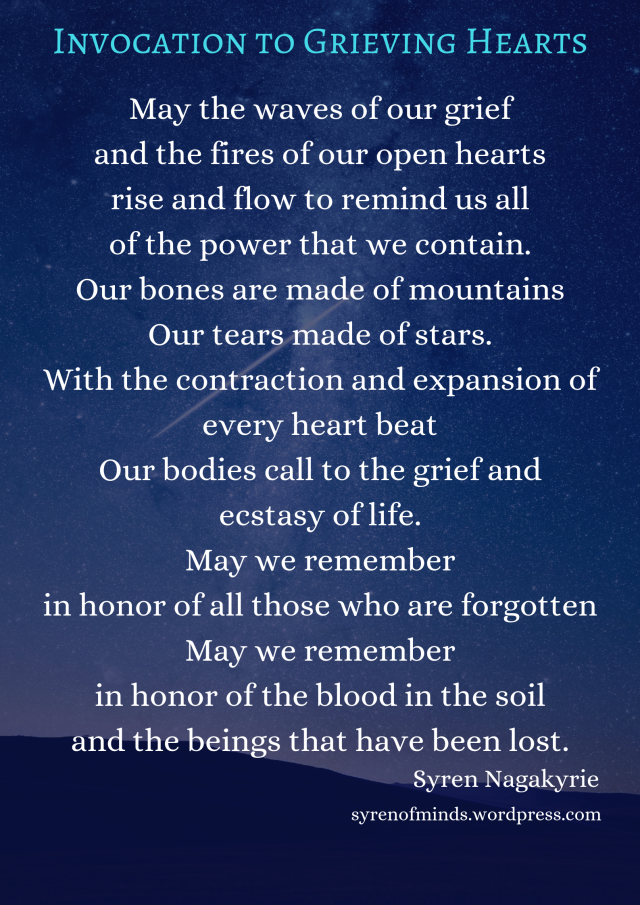
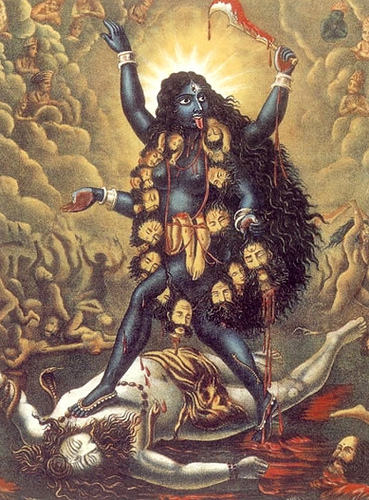 Kali’s iconography frequently depicts Her as standing with one foot upon Shiva, sword upraised, holding a severed head, with her tongue sticking out between closed teeth. One interpretation of this imagery is that Kali sticks her tongue out in shame of stepping on her consort, Shiva. However, in the Devi Mahatmya, Durga manifests Kali to destroy the demon army by using her tongue to lap up the blood of Raktabija, who produces a new demon with each drop. This seems to be an important message about the nature of shame and the power of the Goddess.
Kali’s iconography frequently depicts Her as standing with one foot upon Shiva, sword upraised, holding a severed head, with her tongue sticking out between closed teeth. One interpretation of this imagery is that Kali sticks her tongue out in shame of stepping on her consort, Shiva. However, in the Devi Mahatmya, Durga manifests Kali to destroy the demon army by using her tongue to lap up the blood of Raktabija, who produces a new demon with each drop. This seems to be an important message about the nature of shame and the power of the Goddess.
